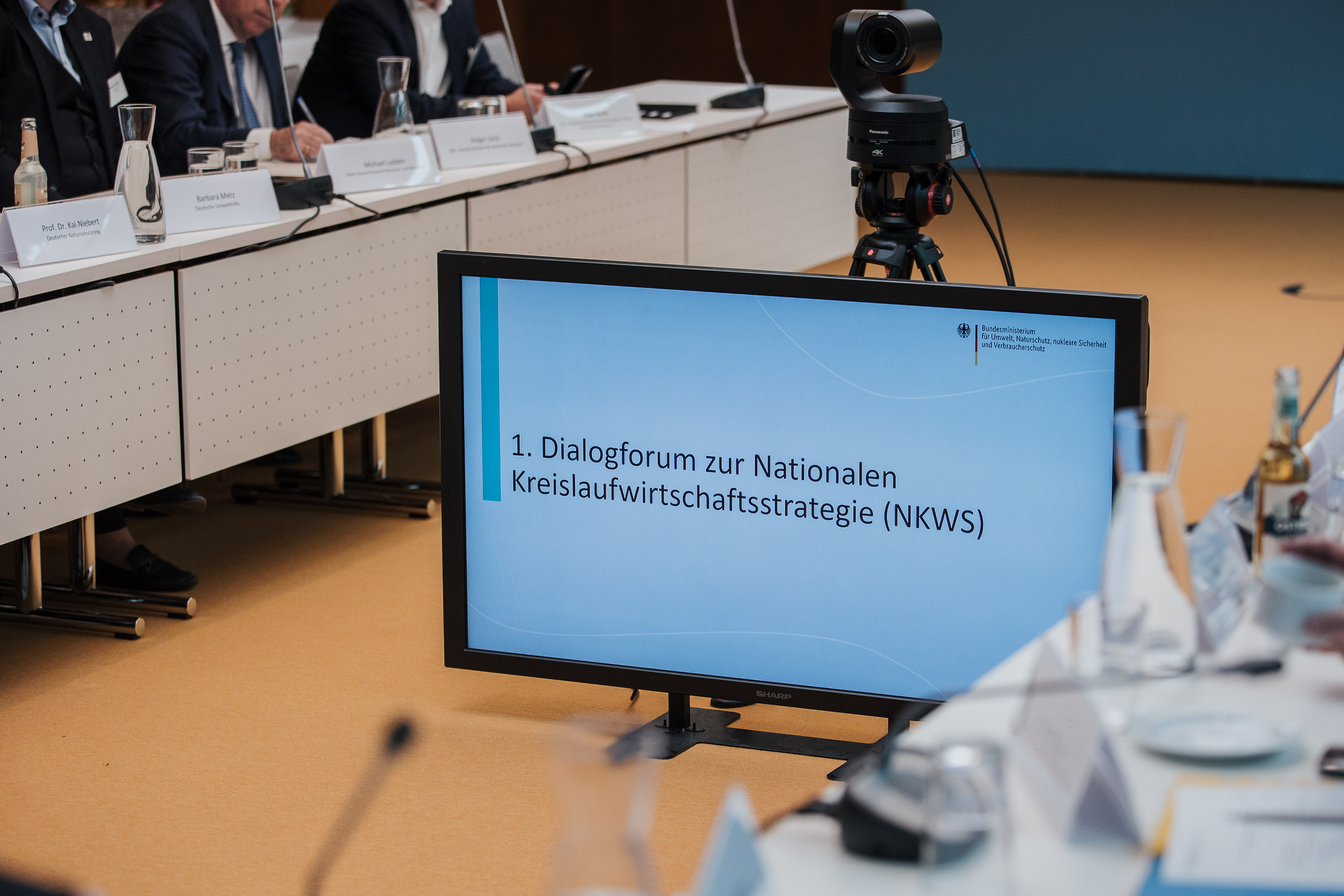The National Circular Economy Strategy (NCES) - an overview
What do we want to achieve with the national strategy for circular economy? - the baseline
The extraction of raw materials causes high costs - for the environment, people and the economy.
Circular economy is not only essential to achieving our climate and environmental policy goals, it also creates tremendous opportunities for growth, employment and competitiveness. The transition to a circular economy has an important role to play in securing the supply of raw materials. It increases the resilience of supply chains and the economy by making greater use of secondary raw materials and improving resource efficiency. And it lowers the demand for primary raw materials.
A circular economy is a crucial prerequisite for achieving our climate targets, increasing economic independence and maintaining competitiveness.
The extraction and processing of raw materials negatively impact the environment and climate. The consequences include the destruction of nature, polluted soil and water, high water consumption, and significant CO2 emissions. In key sectors of our economy, most emissions are caused indirectly by the volume of raw materials used. Therefore, by reducing raw material consumption through circular economy, we can reach our climate targets more quickly and more reliably. At the same time, we preserve our valuable natural resources.
The circular economy represents a future-oriented market and serves as an active risk management strategy for the economy.
Raw materials are often scarce and expensive, and supply chains are frequently disrupted or interrupted. At the same time, we depend on imports of many raw materials from a few, often unstable countries. The circular economy offers opportunities for new, circular business models, reduces the need for primary raw materials, and makes us more competitive while decreasing our dependence on imports.
Consumers want genuine choices.
Reusable instead of disposable, quality instead of short-lived goods, borrowing instead of buying, repairing instead of discarding. They want products that are ecologically beneficial. The circular economy enables sustainable consumption.
A Vision Statement for the Circular Economy in Germany:
Reducing primary raw material consumption
The NCES adopts a strategic vision focused on reducing the consumption of primary raw materials. This approach is guided by the proposal from the International Resource Panel, under the United Nations Environment Programme (UNEP), which sets a global target of 6-8 tonnes of raw material consumption per capita per year by 2050. The vision will be reviewed and adjusted every five years, starting in 2030, with input from industry.
The strategy considers every stage of the cycle: product design, material selection, production, maximizing the use phase and, finally, reuse and recycling. The NCES aims to prevent waste from being created in the first place. This can be achieved through smart product design, efficient manufacturing, extended product lifespans, easier repairability and maximizing the recycling of all materials—from building materials to textiles and industrial metals. This approach is technically feasible and economically sound. Every stage of the value chain is aligned with circular principles. This vision is fully aligned with the European Union’s Circular Economy Action Plan.
Overarching goals of the NCES
The strategy defines the following three overarching goals:
Goal 1: Close material cycles
- The EU target of doubling the use of secondary raw materials in terms of their share of total material use by 2030, compared to the baseline in 2021, will be addressed at national level and supported by measures in all major material flows (CMUR indicator). Key prerequisites for this are sufficient availability of recyclates, their quality and market acceptance, as well as complementary and consistent market analysis.
- The quality of currently inadequate recycling processes will be significantly improved.
Goal 2: Increasing raw material sovereignty and security of raw material supply
- According to the EU benchmarks set out in the Critical Raw Materials Act (CRMA), EU production capacities must be able to meet 10 percent of demand for strategic raw materials in the EU and 40 percent of demand for processed raw material products. The EU’s recycling capacity must be able to meet 25 percent of the demand for strategic raw materials by 2030. No more than 65 percent of any raw material is to be sourced from a single third country. Germany supports these goals nationally through the NCES with effective measures.
Goal 3: Prevent waste
- Lower the per capita volume of municipal waste by 10 percent by 2030 and by 20 percent by 2045 compared with 2020 levels.
Achieving strategy through dialog
The development of the NCES was supported by extensive stakeholder participation process from April 2023 to April 2024. The dialogue process created a platform for incorporating diverse perspectives, expert advice, and innovative ideas from business, society, and science into the Federal Government's decision-making process. An overview of the results can be found here [only available in German].

On the next page: